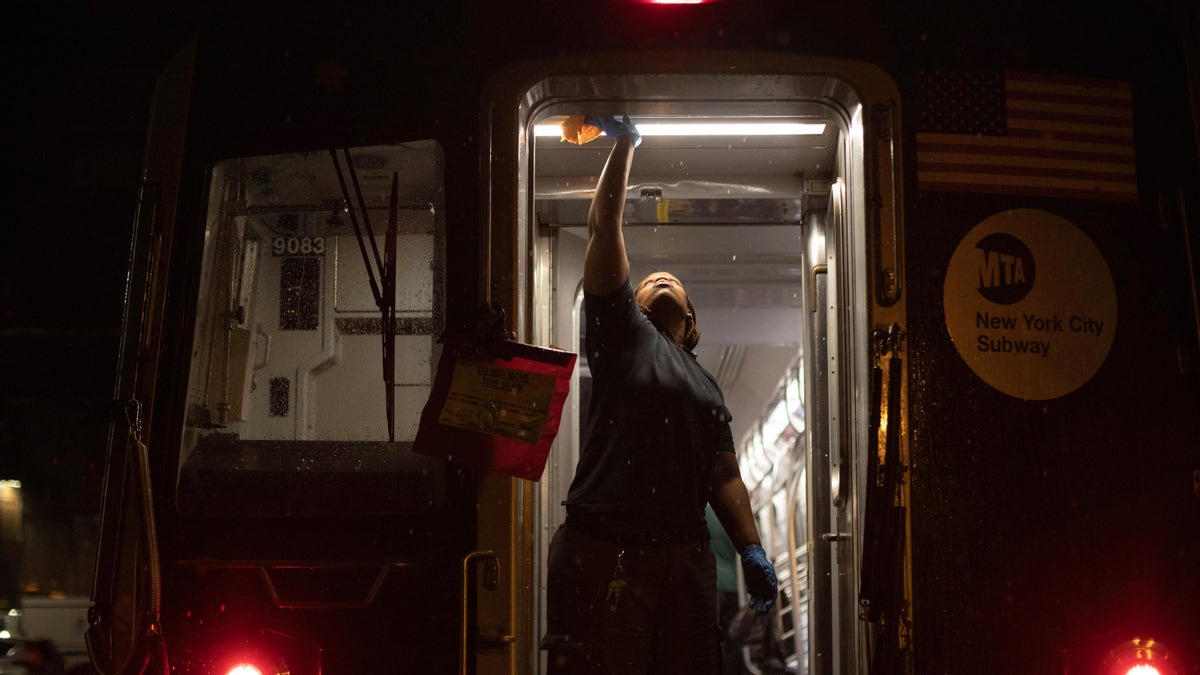Coronavirus doctor says new NIH study doesn't suggest virus is airborne
Fox News speaks with Dr. Daniel Griffin, a top infectious disease specialist from Columbia University to break down the latest coronavirus reports on leaked contingency plans, effects on children and China’s possible virus control.
Get all the latest news on coronavirus and more delivered daily to your inbox. Sign up here.
With most of the U.S. hunkered down for the near future, an important factor is understanding how exactly COVID-19 could spread inside a home.
Much of COVID-19 remains a mystery. Like other coronaviruses, it's known to spread from close person-to-person contact through respiratory droplets, according to the Centers for Disease Control and Prevention (CDC).
But can you catch coronavirus from surfaces?
The CDC's website says surfaces can be contaminated with COVID-19. The website adds, though, that there are no known cases that started in that manner.

Ryans Sees cleans a beverage cooler as he and other employees prepare to close de Vere's Irish Pub in Sacramento, Calif., Tuesday, March 17, 2020. (AP Photo/Rich Pedroncelli)
Even so, a new study by the National Institutes of Health (NIH), CDC, UCLA, and Princeton University scientists found the virus can remain infectious in droplets in the air for hours and surfaces for days.
The study in the New England Journal of Medicine also suggests that people may get the virus "after touching contaminated objects."
FAUCI SAYS IT'LL BE WEEKS BEFORE WE SEE THE EFFECTS OF FOLLOWING CORONAVIRUS GUIDELINES
"The scientists found that severe acute respiratory syndrome coronavirus 2 (SARS-CoV-2) was detectable in aerosols for up to three hours, up to four hours on copper, up to 24 hours on cardboard and up to two to three days on plastic and stainless steel," according to the NIH.
Scientists from the National Institute of Allergy and Infectious Diseases (NIAID) -- part of the NIH -- mimicked the virus being transmitted from an infected person onto everyday surfaces in a household or hospital setting by coughing or touching objects, the agency said. Scientists then investigated how long the virus remained infectious on these surfaces.
A device was also used to release the aerosol which duplicated the microscopic droplets created in a cough or a sneeze, according to Reuters.
"The results provide key information about the stability of SARS-CoV-2, which causes COVID-19 disease, and suggests that people may acquire the virus through the air and after touching contaminated objects," the NIH said.
Scientists also observed that the stability of the virus in aerosols and surfaces likely means healthcare settings are vulnerable to the virus.
"Healthcare settings are also vulnerable to the introduction and spread of SARS-CoV-2, and the stability of SARS-CoV-2 in aerosols and on surfaces likely contributes to transmission of the virus in healthcare settings," the study found.
WASHINGTON STATE CORONAVIRUS CASES TOP 1,000

Metropolitan Transportation Authority worker sanitizes surfaces at the Coney Island Yard, in the Brooklyn borough of New York on March 3, 2020. (AP Photo/Kevin Hagen)
Even though the CDC has said on their website that contracting the new coronavirus from surfaces has yet to be seen, the agency and the World Health Organization (WHO) have strongly suggested cleaning and disinfecting frequently touched surfaces daily to limit the spread of the virus.
The agency says the best practice method of COVID-19 prevention in your home or community setting is cleaning dirty surfaces followed by disinfection. Recommended frequently touched surfaces include "tables, doorknobs, light switches, countertops, handles, desks, phones, keyboards, toilets, faucets, and sinks."
Cleaning refers to the removal of germs, dirt, and impurities from surfaces while disinfecting involves using chemicals to kill germs on surfaces. Both methods can lower the risk of spreading infection, the CDC said.
Those in a home suspected to have COVID-19 should wear disposable gloves when cleaning and disinfecting surfaces. They should be discarded after each cleaning.
CLICK HERE FOR MORE CORONAVIRUS COVERAGE
"If surfaces are dirty, they should be cleaned using a detergent or soap and water prior to disinfection," the CDC said. "For disinfection, diluted household bleach solutions, alcohol solutions with at least 70% alcohol, and most common EPA-registered household disinfectants should be effective."




















